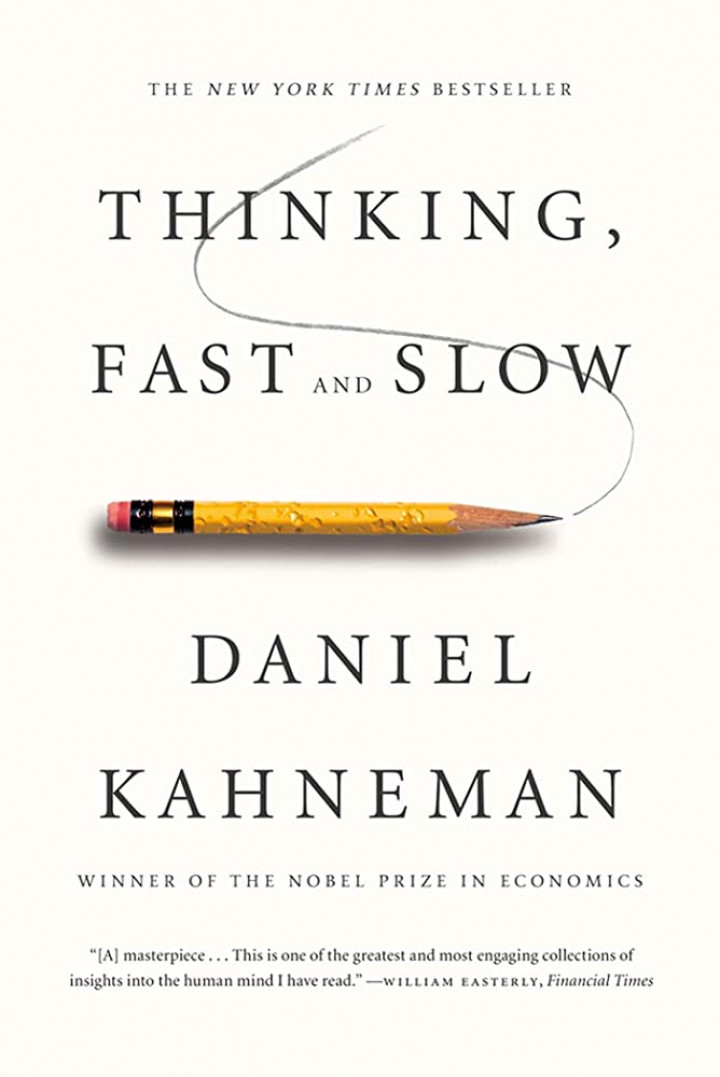Book Recommendation: Thinking, Fast and Slow
Nội dung này đang được dịch và sẽ sớm có mặt.
Cảm ơn sự kiên nhẫn của bạn!
Imagine your mind is run by two different characters: one is impulsive, intuitive, and lightning-fast; the other is deliberate, lazy, yet incredibly thorough. In his groundbreaking book, Thinking, Fast and Slow, psychologist and Nobel laureate Daniel Kahneman introduces these two systems that drive our every thought and decision. It's a fascinating journey into the workings of the human mind, packed with startling experiments that reveal just how often our own intuition leads us astray.

Author: Daniel Kahneman Publication Date: 2011
The Two Systems: The Autopilot and the Deliberate Co-Pilot
System 1 (Fast Thinking):
This is your brain's autopilot. It's fast, intuitive, and operates automatically with little to no effort. It's the system that knows the answer to 2+2, finishes the phrase "bread and...", and makes you recoil in disgust from the sight of spoiled food.
However, this speed comes at a cost. Because it relies on mental shortcuts (heuristics) to make quick judgments, System 1 is prone to predictable errors and biases:
-
The Linda Problem (The Representativeness Heuristic): In a famous experiment, people were given a description of Linda, a woman who is bright, outspoken, and was passionate about social justice in her youth. Most people judged it more probable that Linda is a "bank teller and a feminist" than that she is simply a "bank teller." This is logically impossible, but the first option feels more representative of the description, so our intuitive System 1 falls for it.
-
The Anchoring Effect: We have a tendency to rely heavily on the first piece of information offered (the "anchor"). In one study, participants were asked to estimate the number of African nations in the U.N. after spinning a wheel of fortune. Those who spun a high number consistently gave higher estimates than those who spun a low number—even though the number was completely random and irrelevant.
-
The Availability Heuristic: We overestimate the likelihood of events that are easily recalled. Because we hear dramatic stories about shark attacks in the news, we tend to fear them more than diabetes, even though diabetes kills vastly more people. The vivid, available image overrules the statistical reality.
System 2 (Slow Thinking):
This is your mind's deliberate co-pilot. It’s the conscious, reasoning self that you call upon to solve a math problem (like 17 x 24), park a car in a tight space, or search for a specific detail in a document. System 2 is far more reliable and logical, but it’s lazy and consumes a lot of mental energy.
Why Fast Thinking Usually Wins
Our brains are wired to follow the Law of Least Effort. Because engaging System 2 is hard work and causes cognitive load, our mind defaults to the energy-saving System 1 whenever possible. This "mental laziness" is why we often go with our gut feeling even when careful reasoning would serve us better. System 2 can override the faulty intuitions of System 1, but this requires focus and deliberate effort.
Practical Takeaways:
The insights from this book can be applied to every aspect of life:
-
Make Better Decisions: By recognizing situations where your System 1 is likely to make a mistake, you can consciously slow down and engage System 2 to avoid costly errors.
-
Understand How You're Being Influenced: You'll start to see how marketers, politicians, and others use these cognitive biases (through "nudges") to steer your choices.
-
Gain Self-Awareness: The book helps you understand why you sometimes make irrational choices, fostering more patience with yourself and others.
In Summary:
Thinking, Fast and Slow is more than just a psychology book; it's a user's manual for your own mind. Kahneman provides stunning proof that we are not the rational beings we believe ourselves to be, and that our sense of control over our own thoughts is often an illusion. After reading it, you will never look at your own decisions, the news, or human behavior in the same way again.
A final note for language learners: This framework perfectly describes the journey of language learning. The initial, slow process of consciously applying grammar rules is heavy System 2 work. The ultimate goal is to automate this knowledge until speaking becomes an effortless, intuitive System 1 activity. The book helps you understand why learning is so tiring and how knowledge eventually becomes a skill.